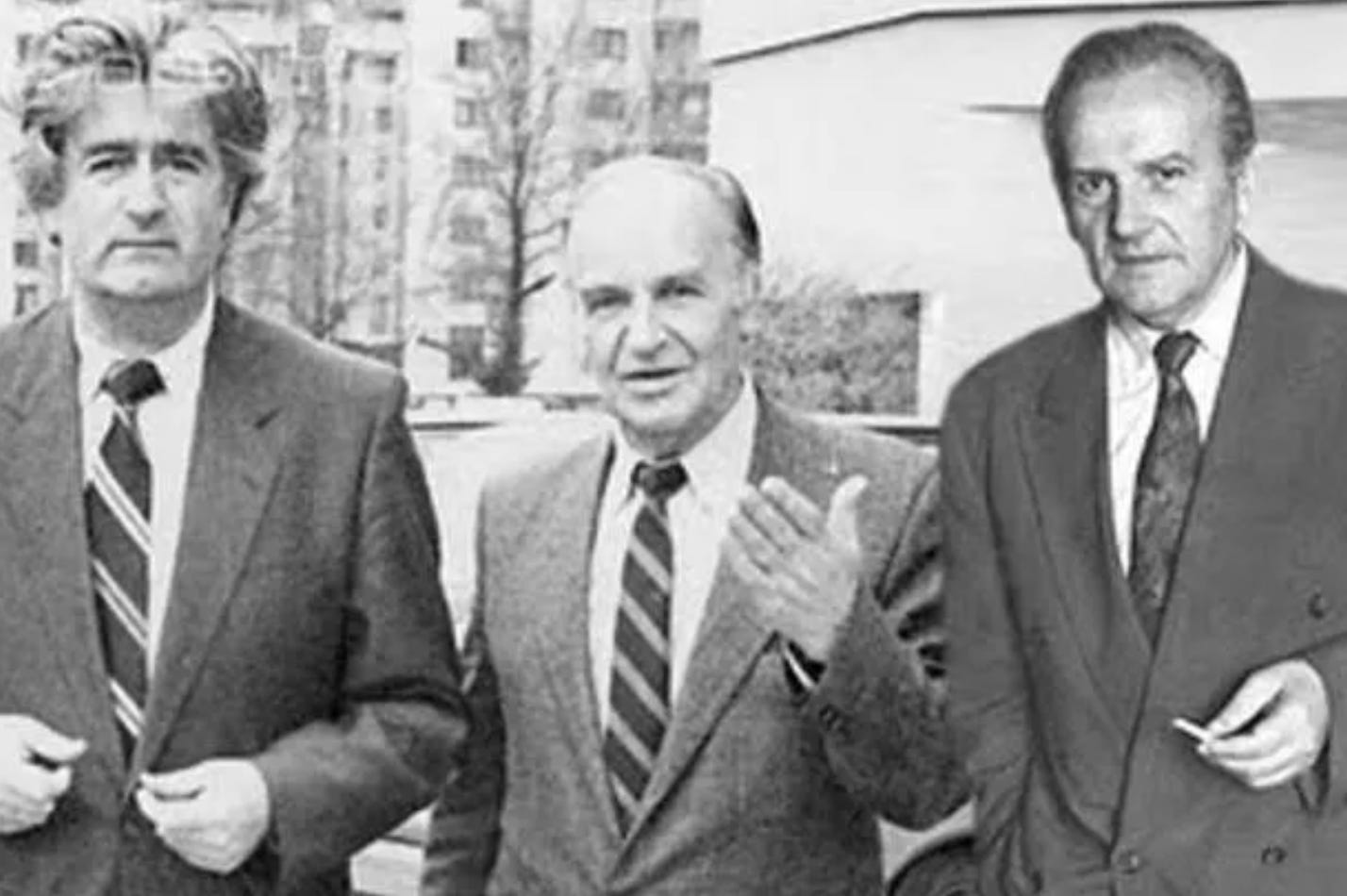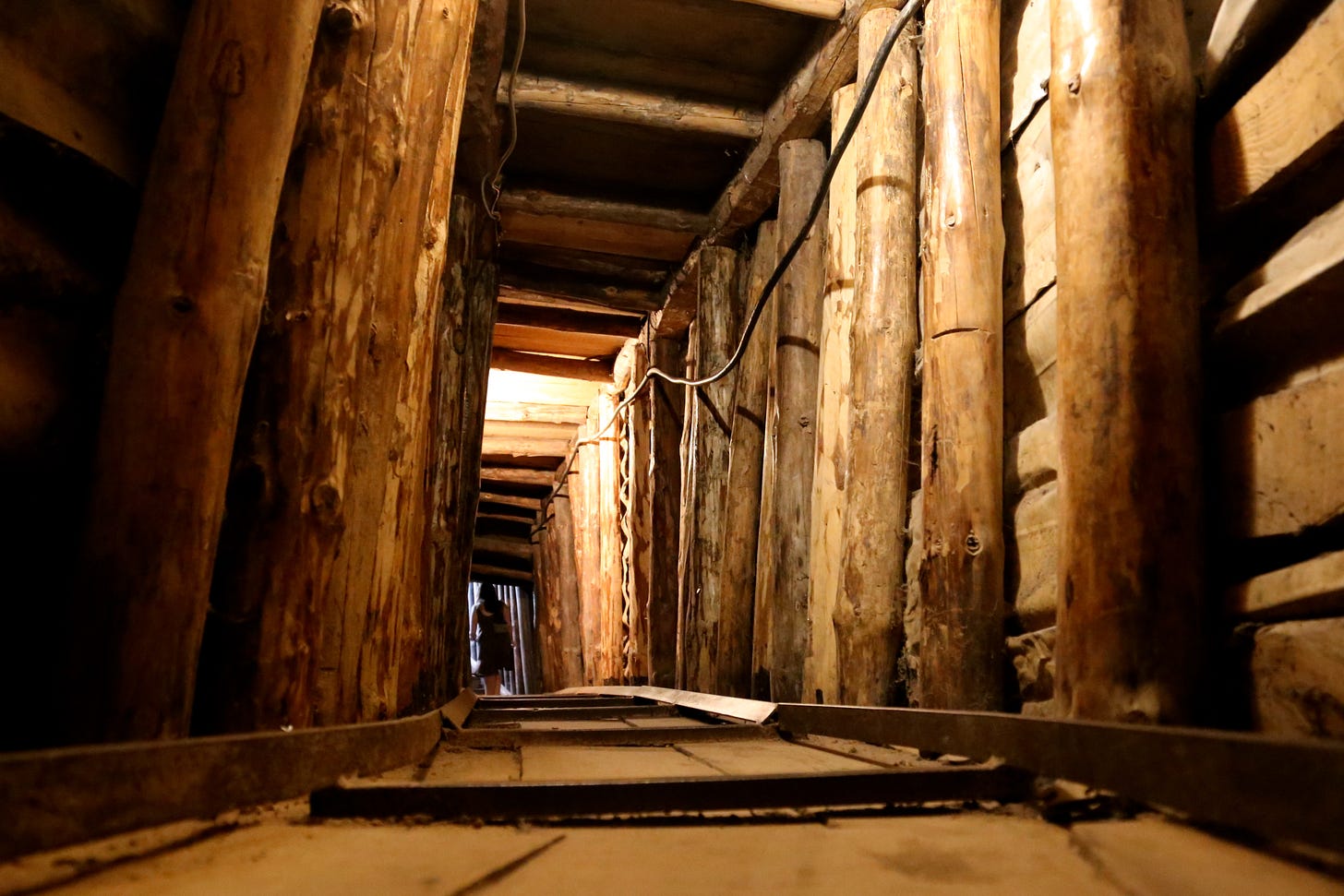August 1993.
The Bosnian President, Alija Izetbegović, had to accept the compromise on the partition of Bosnia and Herzegovina at the Conference for the Former Yugoslavia’s session of 27-30 July [you can listen to the latest episode of BarBalkans - Podcast here].
The compromise lays the foundation for a new peace plan for Bosnia. But it is already showing significant weaknesses, with Bosniaks - the Bosnian Muslims - taking the crumbs.
Izetbegović is forced to accept it because of the dramatic situation the country in general - and Sarajevo in particular - is experiencing.
After more than a year of siege, the Bosnian capital city is almost on its knees.
The encirclement of Sarajevo
In early August, the Republika Srpska Army led by Ratko Mladić launches the toughest attack on Sarajevo since the siege began in April 1992.
In just four days, Bosnian Serb soldiers conquer Mount Igman and Mount Bjelašnica, in Southwestern Sarajevo. It deals a fatal psychological and tactical blow to the defenders, since the city is totally encircled for the first time.
People, food and weapons can get in and out of the Bosnian capital only through a tunnel built during the spring, which connects Sarajevo with the outside world.
The entrance of the tunnel is in Hrasnica village, on the slopes of Mount Igman. It passes under the Sarajevo airport and, after 675 meters, emerges into the cellar of a ruined house.
The violence shown during the siege of Sarajevo heavily and sincerely concerns the international community, in particular the United States.
At the North Atlantic Council in Brussels on August 2, it is decided that NATO aircraft will bomb Bosnian Serb positions in the mountains around Sarajevo, if Mladić does not end the encirclement of the city.
However, this decision exacerbates the tensions between the President of the United States, Bill Clinton, and United Nations Secretary-General, Boutros Boutros-Ghali, over NATO’s options according to Resolution 836.
President Clinton is convinced that the North Atlantic Alliance action can be implemented «at times and places chosen by NATO». Boutros-Ghali demands that all the requests have to be first forwarded to his special representative, Thorvald Stoltenberg, and then approved by himself.
During a new emergency meeting of the North Atlantic Council a week later, a complex procedure for intervention in Bosnia and Herzegovina is finalized.
The compromise solution is called «two-man rule» (the same concept used for the procedure of nuclear device activation).
Any air strike in Bosnia must be approved both by NATO and the UN. The operational assent is given by the commander of NATO-South forces in Naples and by the United Nations Protection Force (UNPROFOR) commander, and it is bound by the political approval of each organization.
On August 18, NATO aircraft carry out an initial exercise over the Mount Igman and Mount Bjelašnica.
The real possibility of an air attack on Bosnian Serb positions causes Mladić’ army to immediately cease the offensive, abandoning the Southwestern area to the French Blue Helmets.
But first they burn down all the villages on the slopes of the two mountains.
The Owen-Stoltenberg Plan
Meanwhile, peace negotiations mediated by Stoltenberg and the European Community negotiator for the former Yugoslavia, David Owen, resume in Geneva on August 18.
The negotiations continue to prove extremely difficult, despite Bosnian President Izetbegović’ hopelessness. While he accepts the demilitarization and temporary UN administration of Sarajevo, he requests an access to Sava River in Brčko and to the Adriatic Sea in Neum.
These demands are rejected by the Serbian and the Croatian counterparts. The only concession is a road linking the four Bosnian-controlled areas, according to the new peace plan.
On August 20, the Owen-Stoltenberg Plan for peace in Bosnia and Herzegovina is presented in Geneva.
The Plan is based on the constitutional project of the “Union of the Republics of Bosnia and Herzegovina”, meaning the dismemberment of the country into three ethnically homogeneous States. A Republika Srpska, a Croatian Republic of Herzeg-Bosnia and a Muslim Republic.
The three Republics will have their own Constitution, government and police force. Sarajevo will be provisionally administered by the UN, Mostar by the European Community.
Considering the territorial partition, the real winners are Bosnian Serbs: all their territories are connected to each other, from Western Bosnia to Eastern Herzegovina. This is 52% of the entire Bosnian territory.
Bosnian Croats are granted a strategic 18% of the territory in two areas, both bordering Croatia: Posavina and Western Herzegovina.
Bosniaks will control 30% of the territory, in a particularly disadvantaged position. They lose temporarily Sarajevo and Mostar, they get neither an access to Sava River nor to the Adriatic Sea, and the four areas under their control (Central Bosnia, Srebrenica, Goražde and Western Bosnia) are all disconnected from each other.

This is another peace plan, another compromise solution that has no hope of being grounded, just like the Vance-Owen Plan. Everything seems like it has already seen before.
The Parliament of Republika Srpska immediately accepts the Owen-Stoltenberg Plan, since it recognizes the military occupations and effectively lifts international sanctions against Yugoslavia.
The Parliament of the Croatian Community of Herzeg-Bosnia votes in favor, hoping to adjust the borders of the newly formed Croatian Republic of Herzeg-Bosnia.
On August 28, the new Bosnian Croat entity’s foundation is celebrated in Grude: Mostar is chosen as the capital city and the leader of Bosnian Croats since January 1992, Mate Boban, is elected President.
The Bosnian Parliament definitively rejects the peace proposal on August 29 and it puts an end to a Plan that has been born crooked and that has lasted not even a summer. Owen and Stoltenberg’s last desperate negotiations resume on August 31, but they last only one day.
In the meantime, the commanders of the Army of the Republic of Bosnia and Herzegovina greenlight the “Neretva 93” operational plan in Zenica. The goal is to penetrate southward, along the Neretva River valley, to attack the Croatian Defense Council troops.
The new peace plan for Bosnia has failed. The war in the country continues.

If you know someone who can be interested in this newsletter, why not give them a gift subscription?
Here is the archive of BarBalkans - Podcast:
And here you can find a summary of the past years:
















Share this post